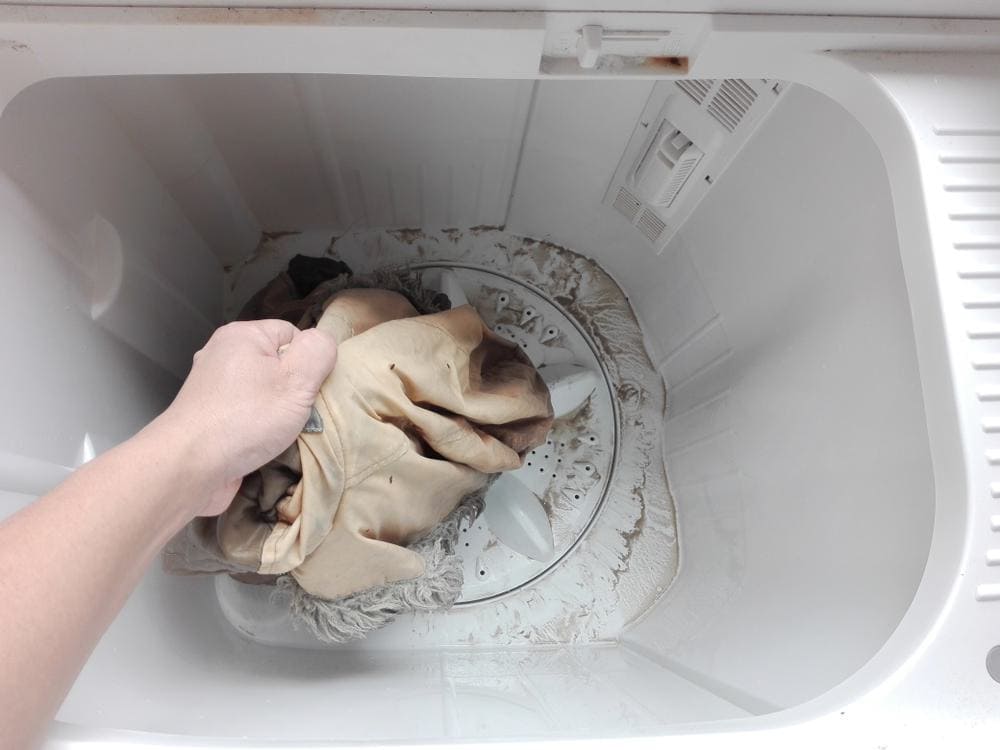
Rinsing clothes properly in a washing machine is an essential part of the laundry process. This seemingly simple step can make a significant difference in how your clothes feel, smell, and last. From the basic steps to the common mistakes and expert tips, this guide will provide you with everything you need to know about rinsing clothes in a washing machine.
To rinse clothes in a washing machine, start by sorting your laundry and loading the machine without overfilling it. Choose the correct cycle and water temperature for your clothes, add the right amount of detergent, and start the wash cycle. After the wash cycle, the machine will automatically start the rinse cycle, refilling with clean water to remove remaining detergent and dirt. Finally, the spin cycle will drain the water and spin your clothes to remove excess water. Remove your clothes promptly after the cycle finishes to prevent wrinkles and mildew.
Why is the Rinse Cycle Important?
The rinse cycle is critical in removing detergent and dirt from your clothes. It refills the washer with clean water and agitates the laundry to rinse out the detergent and dirt. Skipping this step can result in clothes retaining detergent residue, causing skin irritation and making clothes feel less clean.
The Basic Steps to Rinse Clothes in a Washing Machine
- Sort your laundry: Separate your clothes according to color and material to prevent color bleeding and damage to delicate fabrics.
- Load the washing machine: Don’t overfill the machine. Leave enough space for clothes to move freely.
- Choose the appropriate cycle: Select a wash cycle that suits the type of clothes you’re washing. Washing machines typically have cycles like normal, delicate, or heavy-duty.
- Select the water temperature: Choose a suitable water temperature for your clothes. Hot water is more effective for cleaning, but cold water should be used for delicate fabrics or clothes with dyes that might bleed.
- Add detergent: Pour laundry detergent into the appropriate compartment.
- Start the wash cycle: Begin the wash cycle. The machine will fill with water, agitate the clothes with detergent, and then drain the dirty, soapy water.
- Rinse cycle: The machine will refill with clean water and “rewash” your clothes to remove any remaining detergent and dirt.
- Spin cycle: After the rinse cycle, the machine will drain the water completely and spin your clothes at high speed to remove excess water.
- Remove clothes: Take your clothes out of the machine as soon as the rinse and spin cycles are finished to prevent wrinkles and mildew.
Common Mistakes to Avoid
While rinsing clothes in a washing machine seems straightforward, there are common mistakes that can affect the effectiveness of the rinse cycle:
- Using too much detergent: Overusing detergent doesn’t make your clothes cleaner. It creates extra suds that don’t rinse out completely, leaving residue on your clothes.
- Not sorting laundry: Mixing different types of fabrics and colors can lead to damage or color bleeding.
- Not checking pockets: Forgetting to empty pockets can lead to damage to your clothes and the washing machine.
- Overloading the machine: Overfilling the washing machine can result in clothes not being cleaned or rinsed properly, and it can also put stress on the machine.
- Waiting too long to unload laundry: Allowing wet laundry to sit in the machine for hours can result in unpleasant odors that may require an additional wash cycle.
Tips for Effective Rinsing
To ensure that your clothes are properly rinsed, follow these steps:
- Use the right detergent: Choose a detergent suitable for your clothes and the water temperature you’ll be using.
- Don’t overuse detergent: Using too much detergent can cause clothes to remain dirty due to excessive suds trapping soil on your clothing.
- Select the appropriate water temperature: Use cold water for dark colors and delicate fabrics, and warm or hot water for whites, bedding, and towels.
- Rinse clothes thoroughly: Make sure to rinse your clothes until the water runs clear and no suds are visible. This ensures that all detergent and dirt are removed from the fabric.
- Avoid overloading the washer: Overloading the washer can cause clothes to rub together, leading to damage and poor rinsing.
Machine Maintenance for Effective Rinsing
Maintaining your washing machine is also crucial for effective rinsing. Regular cleaning, checking and cleaning filters and drains, cleaning removable parts, and keeping the door open between laundry cycles can all contribute to a more effective rinse cycle.
With these steps, tips, and precautions, you can ensure that your clothes are properly rinsed, leaving them clean, fresh, and ready to wear. By taking the time to understand and implement these practices, you can extend the life of your clothes and keep them looking their best.
Frequently Asked Questions
How much detergent should I use for a load of laundry?
The amount of detergent you should use depends on the size of the load, the type of detergent, and the hardness of your water. Always refer to the detergent packaging for specific instructions. Generally, for a regular load, you can use about one tablespoon of high-efficiency (HE) liquid detergent.
What is the purpose of the spin cycle in a washing machine?
The spin cycle uses centrifugal force to remove the majority of the water from your clothes after the rinse cycle. It spins the drum at high speed, which forces the water out of the clothes and into the drain. This significantly reduces drying time and saves energy.
Can I use hot water for all my clothes to ensure they are cleaner?
No, using hot water for all your clothes is not recommended. Hot water can cause some fabrics to shrink, fade, or wrinkle. It’s best to use hot water for sturdy fabrics like towels and bed linens. For delicate fabrics and clothes with vibrant colors, cold water is usually a safer choice.
What happens if I skip the rinse cycle?
If you skip the rinse cycle, your clothes might retain detergent residue, which can cause skin irritation and make the clothes feel less clean. The rinse cycle is essential for removing dirt and detergent from your clothes after the wash cycle.
How often should I clean my washing machine?
It’s recommended to clean your washing machine once a month to ensure it operates efficiently and keeps your clothes clean. Regular cleaning helps prevent build-up of detergent residue, limescale, and other debris.












